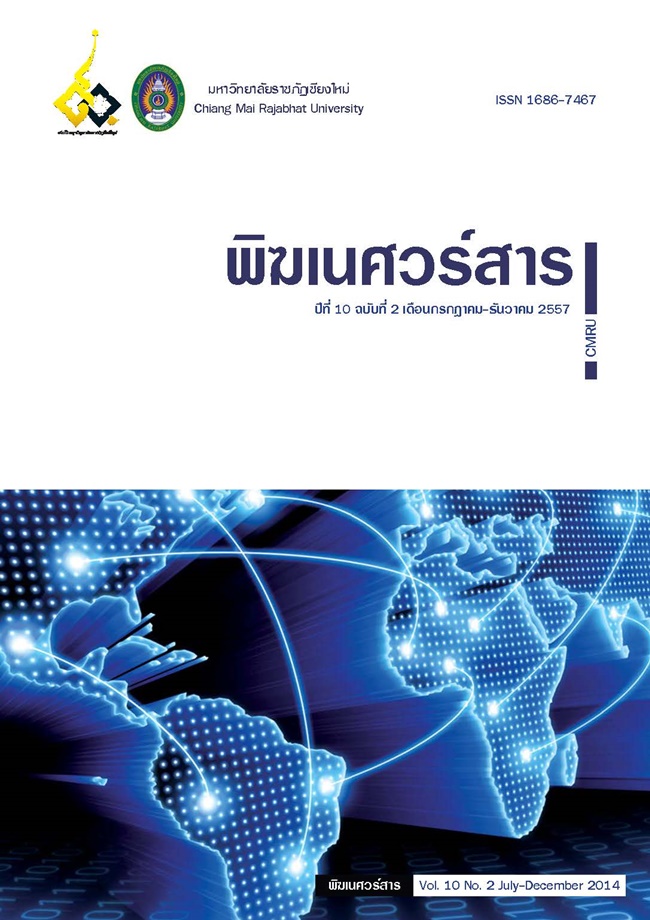คุณธรรมในปัญญาสชาดกฉบับล้านนา
Main Article Content
Abstract
การวิจัยครั้งนี้มีวัตถุประสงค์เพื่อ 1. วิเคราะห์คุณธรรมจากพฤติกรรมตัวละครที่ปรากฏในปัญญาสชาดก 2. วิเคราะห์แบบเรื่องของปัญญาสชาดกฉบับล้านนา การศึกษาวิจัยเรื่องคุณธรรมในปัญญาสชาดกฉบับล้านนานี้ เป็นการศึกษาเชิงเอกสาร ผลการศึกษาพบว่า
คุณธรรมพื้นฐาน 8 ประการจากพฤติกรรมตัวละครที่ปรากฏในปัญญาสชาดก คุณธรรมที่ปรากฏมากที่สุดมี 6 ประการ ทั้งนี้แต่ละเรื่องจะมีคุณธรรมที่ปรากฏไม่ซ้ำกัน คุณธรรมที่ปรากฏลงรองมามี 5 ประการและแต่ละเรื่องจะมีคุณธรรมที่ปรากฏไม่ซ้ำกัน คุณธรรมที่ปรากฏน้อยที่สุดมี 1 ประการและคุณธรรมที่ปรากฏมากที่สุดคือคุณธรรมเกี่ยวกับความสะอาดมีอยู่ 33 เรื่อง คุณธรรมที่ปรากฏรองลงมาคือความมีน้ำใจ 30 เรื่อง คุณธรรมที่ปรากฏน้อยที่สุดคือความประหยัดมี 5 เรื่อง
แบบเรื่องของปัญญาสชาดกประกอบด้วย 1. ปัจจุบันวัตถุ ซึ่งจะเริ่มต้นด้วยภิกษุสนทนากันในโรงธรรมถึงเรื่องบุคคลและกรรมของท่านในชาดก พระพุทธเจ้าทรงทราบจึงเสด็จมาตรัสพระธรรมเทศนา 2. อดีตวัตถุ จะกล่าวถึงเรื่องที่เกิดขึ้นแล้วในอดีตชาติของพระพุทธเจ้า เมื่อครั้งเป็นพระโพธิสัตว์ 3. คาถา เนื้อเรื่องจะดำเนินเรื่องด้วยบทร้อยแก้วแล้วจะคั่นด้วยคาถาสลับบทร้อยกรองที่เป็นภาษาบาลีสลับกัน 4. สโมธาน จะกล่าวถึงตัวละครในอดีตชาติได้กลับชาติมาเกิดเป็นใครบ้าง ทำให้เห็นความสัมพันธ์ระหว่างสองชาติ
THE MORALITY IN PANYASACHADOK, LANNA VERSION
This research was aimed at analyzing morality as appeared in the behavior of the characters in Panyasachadok and analyzing the story structure of its Lanna version. The research was conducted through documentary analysis. It was found that among the 8 moralities of the character’s morality, there were 6 moralities that appeared the most. Each story had its own morality with resemble, followed by 5 moralities each of which appeared in one story without resemble. There was only 1 morality that appeared the least. The most appeared morality concerned cleanliness which appeared in 33 stories. The next was the morality on generosity appearing in 30 stories. The least appeared morality was on saving which appeared in 5 stories. Panyasachadok’s story structure included 1) present objects starting with the conversation of the monks in the Dhamma hall on characters and their actions in the chadok which was known by Lord Buddha who came to give a sermon; 2) past objects which covered the things already happened in a Lord Buddha’s past life when he was Bodhisattva; 3) spell – the story began with prose before switching to poem in Pali; and 4) assembly – mentioning the characters who reincarnated showing the connection between individual’s live.
Downloads
Article Details
The articles published are copyrighted by the Graduate School, Chiang Mai Rajabhat University.
The opinions expressed in each article of this academic journal are solely those of the individual authors and do not reflect the views of Chiang Mai Rajabhat University or its faculty members. The responsibility for the content of each article rests entirely with the respective authors. In the event of any errors, the authors alone are responsible for their own articles.


